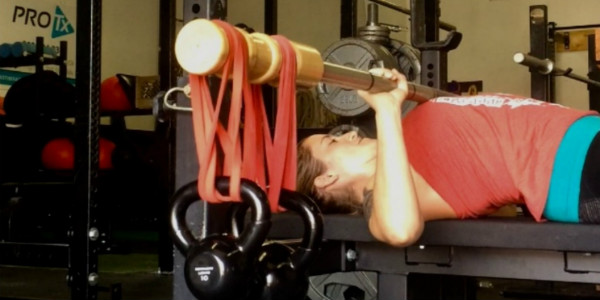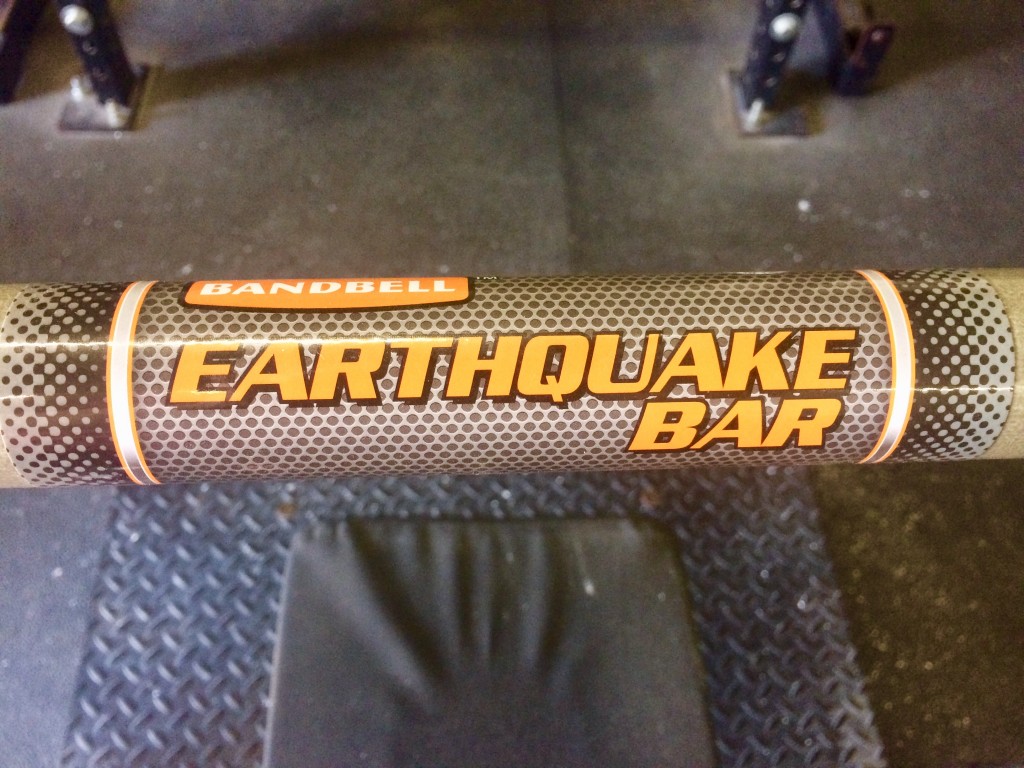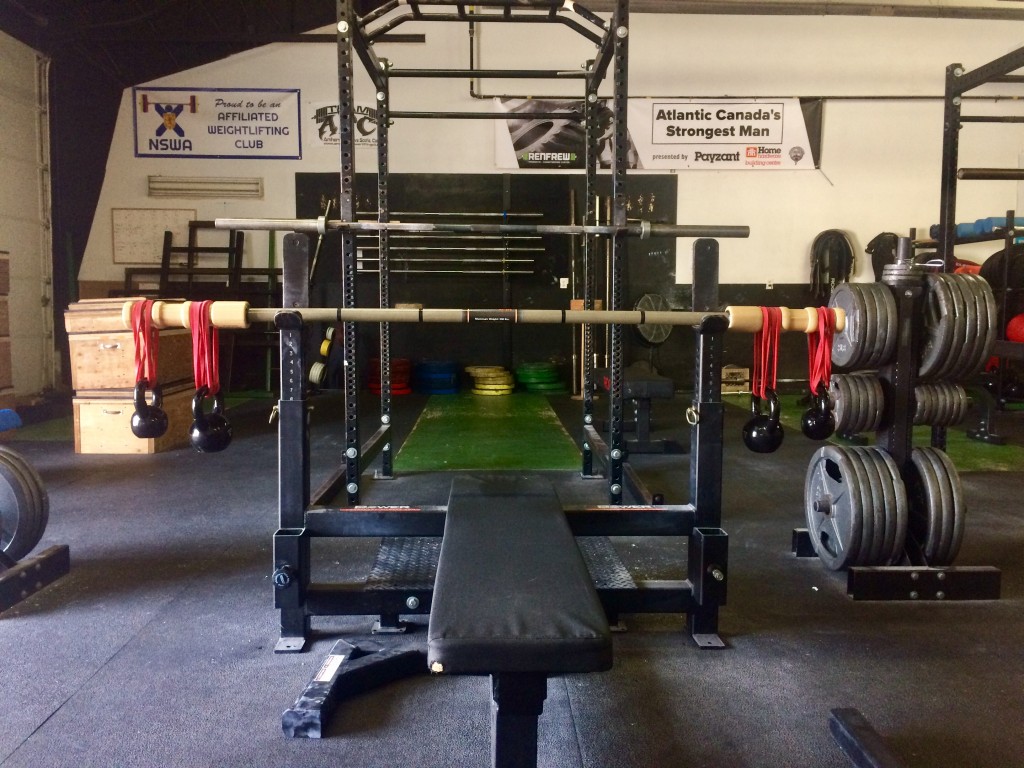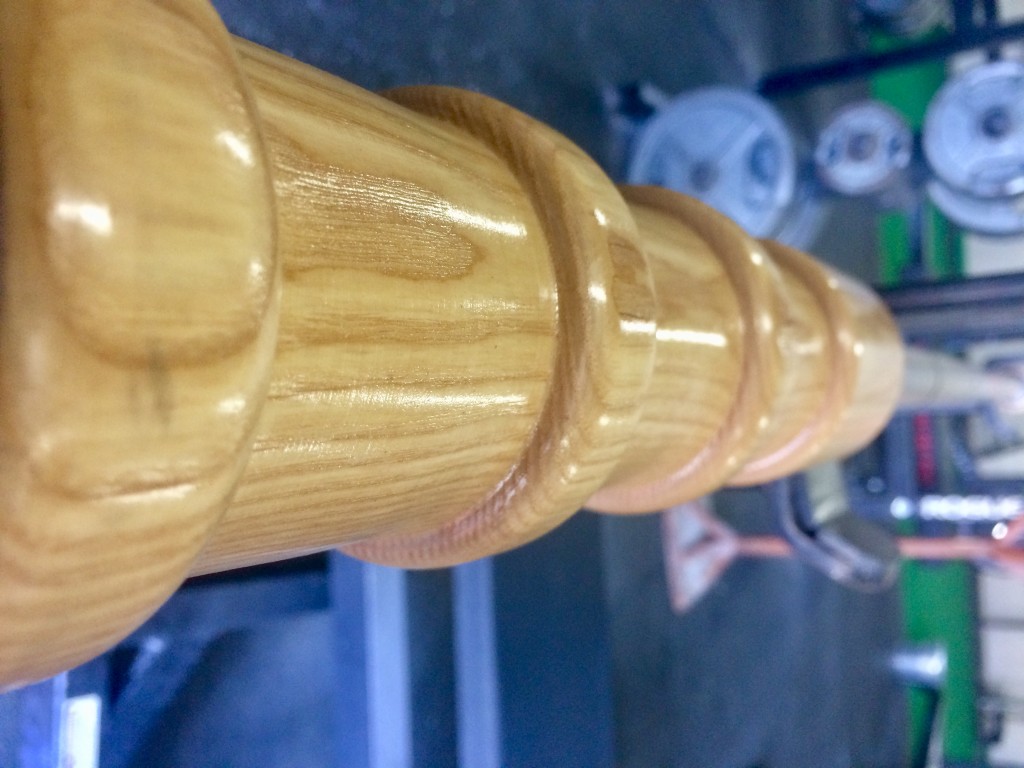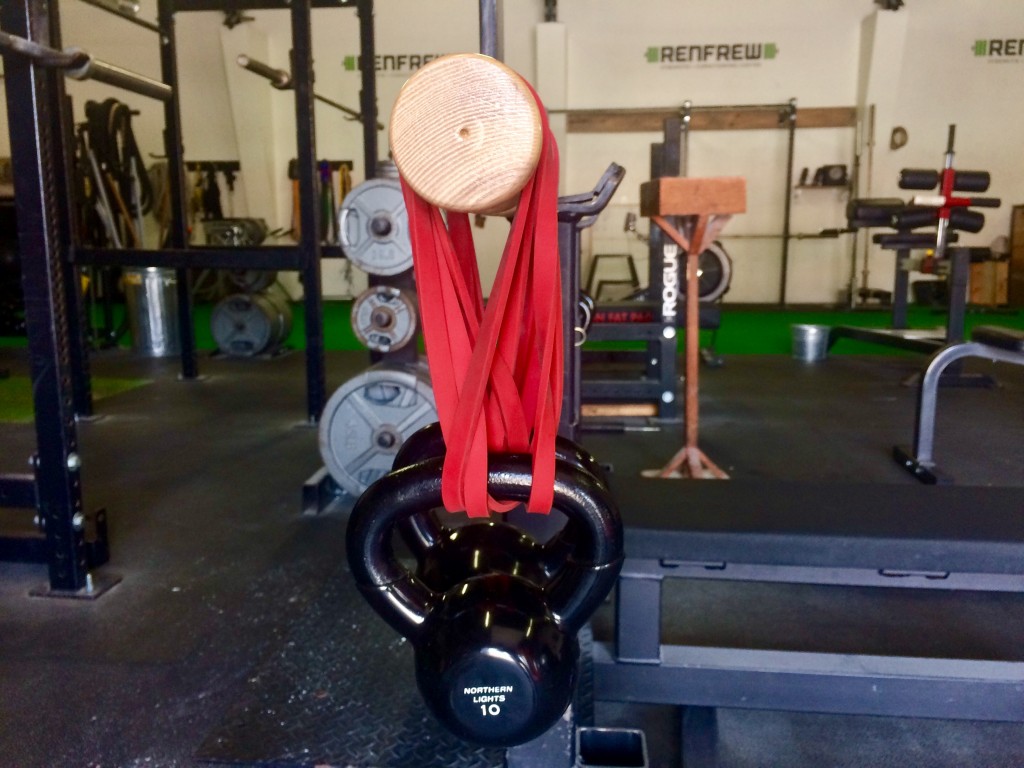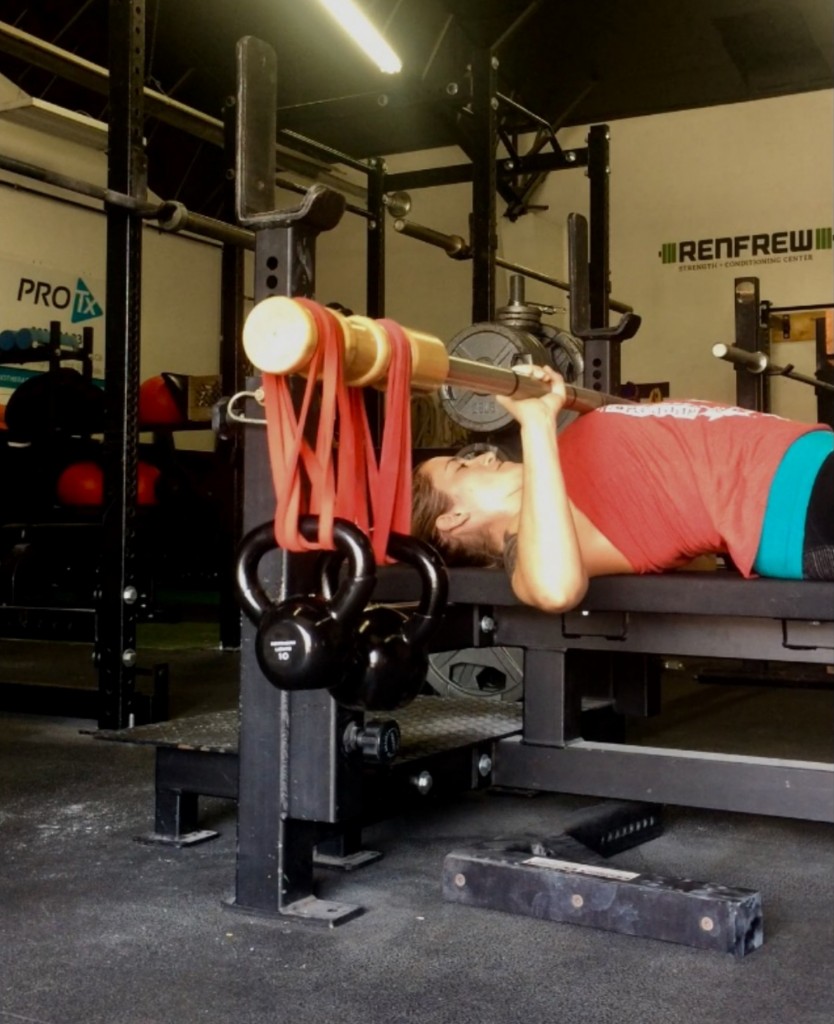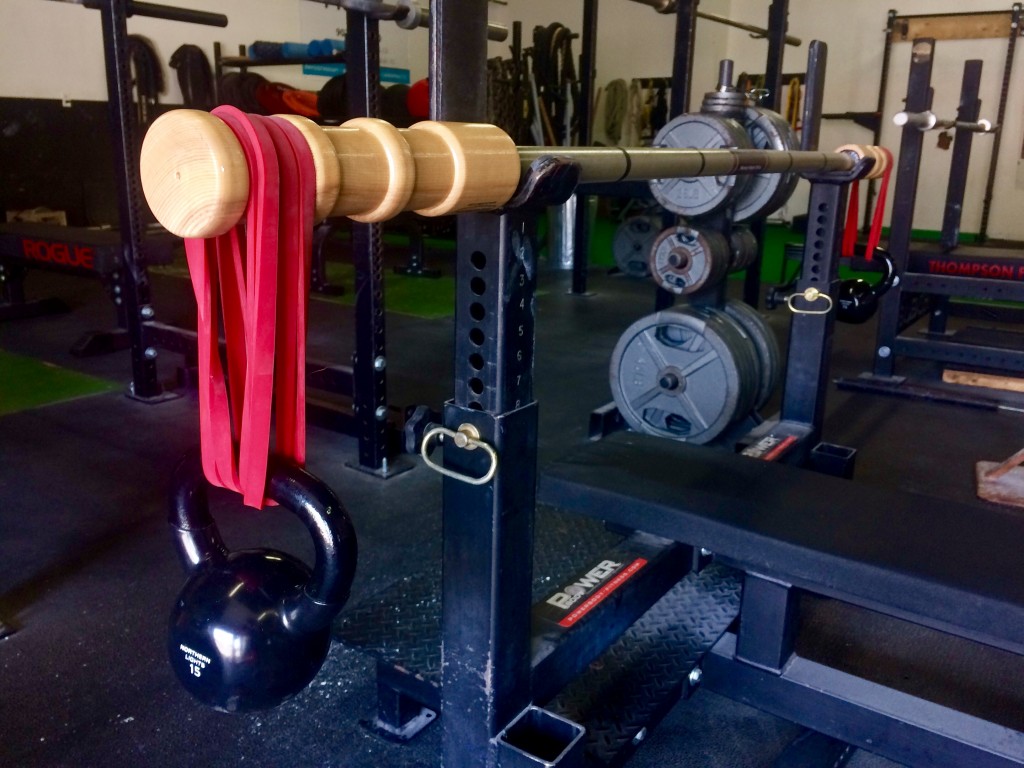Editor’s Note: Before getting into Nikita’s review, we’ve got to lead with this video from an Arnold Classic event a few years ago to show you how wacky this bar is.
When performing a bench press, the key focus is on positioning, stability, and drive to lower the bar in a controlled fashion and propel it off the chest to complete the lift. The BandBell Earthquake bar challenges that process by adding instability, regardless of if you’re performing a bench press, a squat complex, an overhead press or whatever you use a barbell for in your training.
Bandbell is the brainchild of professional bodybuilder Jim Seitzer [Editor’s Note: Jim clarified to us that he was a nationally ranked amateur powerlifter and has been involved in bodybuilding as well, but he was never a professional bodybuilder. Another website cites Jim as a professional bodybuilder, hence the confusion.] His athletic journey started in high school, leading to training with Louie Simmons and the Westside Barbell crew shortly after graduating from college with a degree in physiology and anatomy and completing grad school with a specialization in exercise physiology. Seitzer applied his brains and his brawn to his powerlifting and bodybuilding training and won many honorable distinctions for his efforts.
Seitzer’s education and years of experience were put to the test with a shoulder injury that had him rethinking rehabilitation. This all culminated in the development of BandBell with a focus on applying Oscillating Kinetic Energy (OCE) to athletic rehabilitation. The Earthquake Bar is an evolution of the early Bamboo Bar, designed with user experience in mind.
Table of Contents
Earthquake Bar Specs
It’s worth noting that the Earthquake Bar weighs almost nothing, tipping the scale at a grand total of 6lbs. Be prepared when you lift the bar so that you don’t throw it through the ceiling. Despite being referred to as the “Bamboo Bar,” both Bandbell’s original bamboo bar and the evolved Earthquake Bar are made out of hardened ash and resin. It is scientifically designed to be light and flexible while being durable enough to hold up to 300lbs.
This specialty bar is 80 inches in length, with 13-inch sleeves. The grip diameter is 1.5″, smooth composite resin bar with grip markers but no knurling. The purpose of this bar is not for a seasoned athlete to hit a bench PR but to add some variability in training or assist in the rehabilitation of an injury.
The sleeves have 2-inch safety grooves carved into the wood to keep loaded bands safe and secure. This is an upgrade from the Bamboo Bar, which had safety slots for securing bands but made it risky to add weights due to the extreme bend in the bar when it’s loaded with heavier weights.
Why Use the Earthquake Bar?
While the inspiration behind the bar is based in functional rehabilitation, it’s a great bar to use for all weight training athletes, including powerlifters and Crossfitters. The main reason to incorporate this bar into your training regimen is its ability to hit all of the small, subtle stabilizer muscles that often get overlooked during regular training. The ability to work these muscles is guaranteed to help you when you use a Rogue Bella Bar to perfect your snatch or unrack a Texas Squat Bar to PR your squats during your next meet.
In conjunction with hitting the stabilizer muscles, the Earthquake Bar also reiterates the importance of form when lifting and helps train you to maintain and perfect your form for best results. This training carries over into handling a steel training or competition bar. To be able to complete a lift with the Earthquake Bar, you need to stay in alignment while completing a lift. You need to be in control of the bar path, especially in upper body work, to be able to lift even the lightest of weight. Many experienced lifters have surprised themselves by dropping their initial warm-up weight with this bar, simply because they get lazy with form when the weight is off.
The Earthquake Bar is a great way to incorporate functional rehabilitation into training programs for those who have experienced an injury and have otherwise been unable to train, which was the initial purpose of the bar. Work this bar into your training rotation when the muscle soreness starts to add up.
Ease of Use
Unlike many of the bars reviewed here, the Earthquake Bar isn’t supposed to be “easy” to use. The lack of knurling and fatter grip makes you cognizant of how well you’re holding the bar. The instability sometimes makes you feel like you’re bench pressing Jello. However, it’s these features that make the bar effective.
There’s a learning curve with this bar. It’s highly recommended that you set your ego aside and start really light as to get a feel for the bar in your hands. Once you’ve become familiar with the sensation of the movement in your hands, you can start to increase the weight.
The grooved sleeve design makes it easier and safer to load bands with weights onto the bar. You can do this with kettlebells, plates, dumbbells, etc. However, as the bar only weighs 6lbs, you may require help with loading. Have a partner secure one side while you load or unload the other. Failure to do so will send the bar toppling to the ground, even with something as small as a 15lb kettlebell.
BandBell has developed the Cardillo-Bandbell loader to help make the loading process easier. These steel frames hang from the bar using bands and have a peg upon which you can load up to five 25lb plates. This feature will certainly make loading and unloading easier but doesn’t help with balancing the lighter side during the transition. It’s also upward of $200 for the Cardillo-Bandbell loading pair, which is a costly investment on top of the $300+ bar.
BandBell Training Resources
In one area above all others, BandBell gets credit for having lots of resources available to customers and users, as well as having great customer service. The business is very active on social media, quick to answer questions and comment on posts about using the Earthquake Bar.
The BandBell website gives an in-depth look at how to use the bar, including various exercises for different muscle groups, as well as an in-depth look at building a shoulder rehab program with the bar. In addition to rehab resources, the website showcases how to use the bar for prehab, conditioning, strength, and balance.
As loading the bar can be a bit of a struggle, BandBell also includes videos about how to safely go about this process. It’s great to see a business that stands behind their product and wants their customers to benefit from its use as much as possible.
Arrival and Maintenance
The Earthquake Bar arrived at Renfrew Strength and Conditioning Center in mint condition, with the sleeves well polished and protected from potential scratching. To maintain the bar, simply wipe off residue with a non-abrasive cleaner or damp cloth. It won’t see the same wear and tear as a steel barbell, as it doesn’t experience the friction of loading and unloading plates.
It’s recommended that you keep this bar stored somewhere off the floor, opting for a horizontal rack as the sleeves won’t fit in a vertical storage apparatus. You should also keep the bar away from the general use bars in your gym. This ensures that it doesn’t get misused or mistreated, preventing damage to both your bar and your gym members.
Personal Notes on Usage
Despite hearing the positives about this bar, you might be wondering if it’s something you’ll actually use for training as someone who isn’t limited by shoulder injuries. The bar does come across as a bit of a novelty. It’s arguably not a must-have tool to train if you aren’t injured or limited.
As a powerlifter, I will be using it in the off-season as it has the potential to do wonders for improving stability in the various lifts, which is crucial in presses. During competition training, it might be something I revisit on lighter lifting days to try and refine my form before the big day, but only to the extent where you’d swap out for a camber bar or Swiss bar to shake things up. Ultimately, it will be a supplement for training rather than a set part of the routine.
While the physical demands of the earthquake bar aren’t as intense as a loaded barbell, it can be frustrating to use and takes a lot of mental focus that could be better used elsewhere. I didn’t feel that satisfying sense of exhaustion after using it. If you’re someone who overthinks things or gets hung up on numbers, avoid it.
Conclusion
All in all, the Earthquake Bar is a valuable asset to any gym. Your serious lifters will appreciate the versatility and lifters who are getting back into a routine after experiencing an injury will appreciate the rehabilitative properties of the bar. It’s also a bit of a rarity, with few gyms in smaller areas offering an Earthquake Bar. That’s bound to change as awareness builds about the benefits of using this tool, for both serious weightlifters and those involved in physical therapy and rehabilitation programs.
Editor’s Notes (David) :
I had a chance to speak with the inventor of the Earthquake Bar, Jim Seitzer.
Jim invented the Earthquake Bar as both a rehab and prehab tool, meaning it isn’t just for recovering from injuries but for preventing them. People’s stabilizer muscles in their shoulders (all the other little muscles underneath the set of deltoids) are often not strong enough to make the shoulder joint a perfectly operating mechanical system, which leads to bad consequences particularly when pressing heavy loads. That’s how people hurt their rotator cuff, which is what we call the four stabilizer muscles and tendons in the shoulder. Large muscles that are frequently targeted for training like deltoids, pecs and triceps can handle the load, but the stabilizer muscles are undeveloped.
We’ve known about strengthening stabilizer muscles for decades, but the Earthquake Bar takes a unique approach at it and seems to be effective. Jim himself took time away from using the Earthquake Bar in his training, and after a while his shoulders started to bother him again. So he added the Earthquake Bar back into his routine, and his shoulder pain went away. He isn’t the only one – athletes like 4-Time World’s Strongest Man Brian Shaw make use of it.
He suggests using the Earthquake Bar once a week to keep your shoulders in good shape. It’s best known as a bench press bar, but you can use it for any other barbell lifts to help build the stabilizers throughout your body. Do it and you will most likely avoid an injury to those muscles that sets you back months in your training.

